It has been more than three months since we exhausted the Earth's capacity this year to replenish the natural resources that we have used.
This tipping point, known as Earth Overshoot Day, is, according to sustainability experts, happening dramatically earlier than in past decades.
In 2025 we reached this point on 24 July as people emited more CO₂ than the biosphere can absorb, used more freshwater than is replenished, harvested more trees than can regrow, or fished quicker than stocks replenish.
The impacts are not just about biodiversity loss, but go to the heart of food and energy insecurity, health crises and conflict.
Ultimately, these are not conditions in which most business can thrive.
However there are pockets of optimism and examples of companies innovating, adopting circular approaches to their products and grabbing a huge economic opportunity.
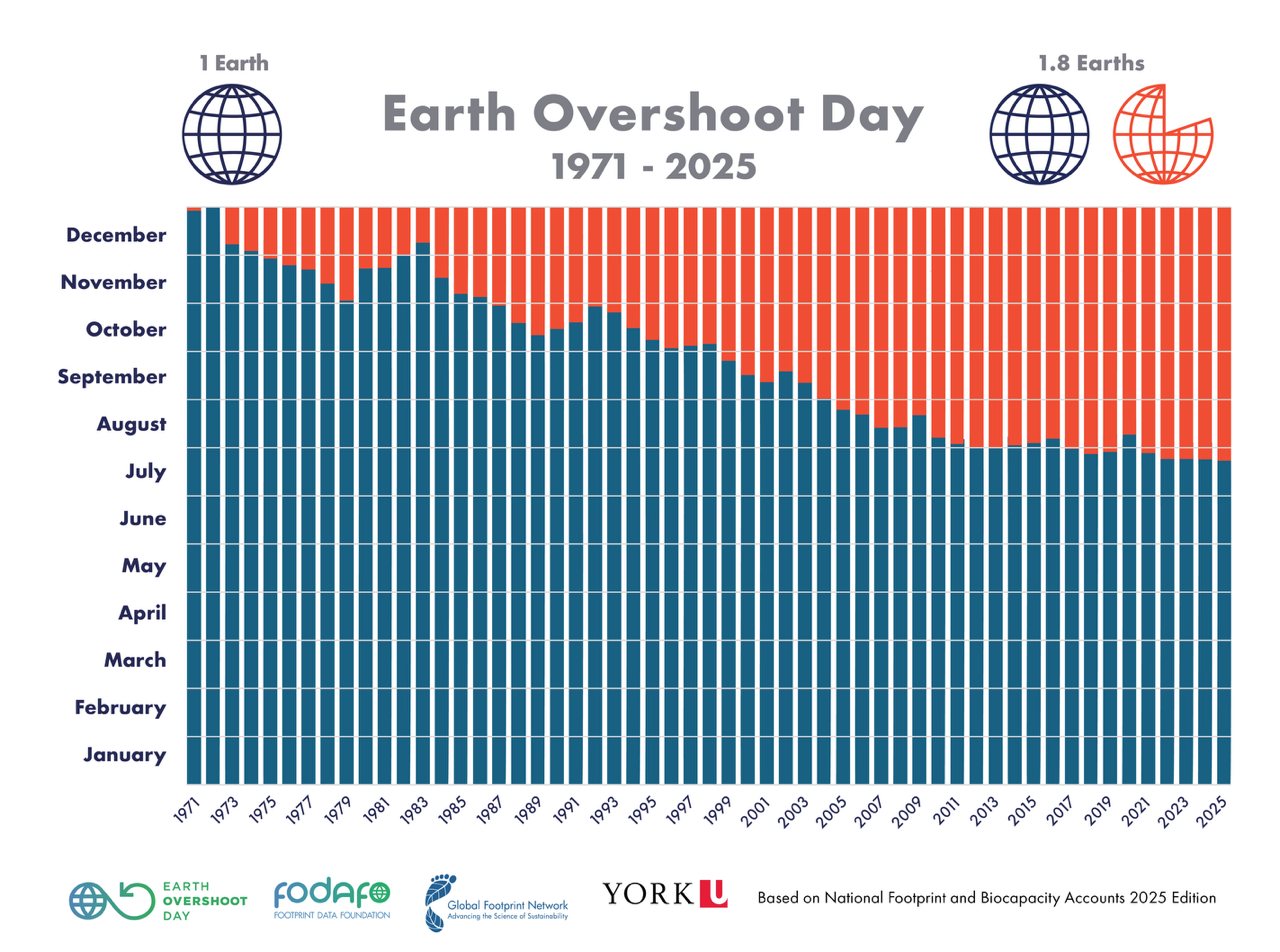
"We're part of a huge transition"
Munish Datta, a Fellow at the University of Cambridge and director of sustainability at Specsavers Group, remains hopeful and excited about the future.
He was one of the speakers at this year’s Channel Islands Sustainable Business Conference.
“We're in a period of huge transition, physically, socially and economically in all parts of the world,” he said.
“Physically, we know that the planet is warming at a faster rate than anyone predicted. We know that our glaciers are melting.
“We know that that has an immediate impact on the availability of things like food and water and other resources, which puts enormous pressure on the costs of living and the way citizens are able to conduct their lives, and it's also therefore further exacerbating some inequalities and challenges that already exist in society, particularly in the last five to seven years, where those inequalities have widened.
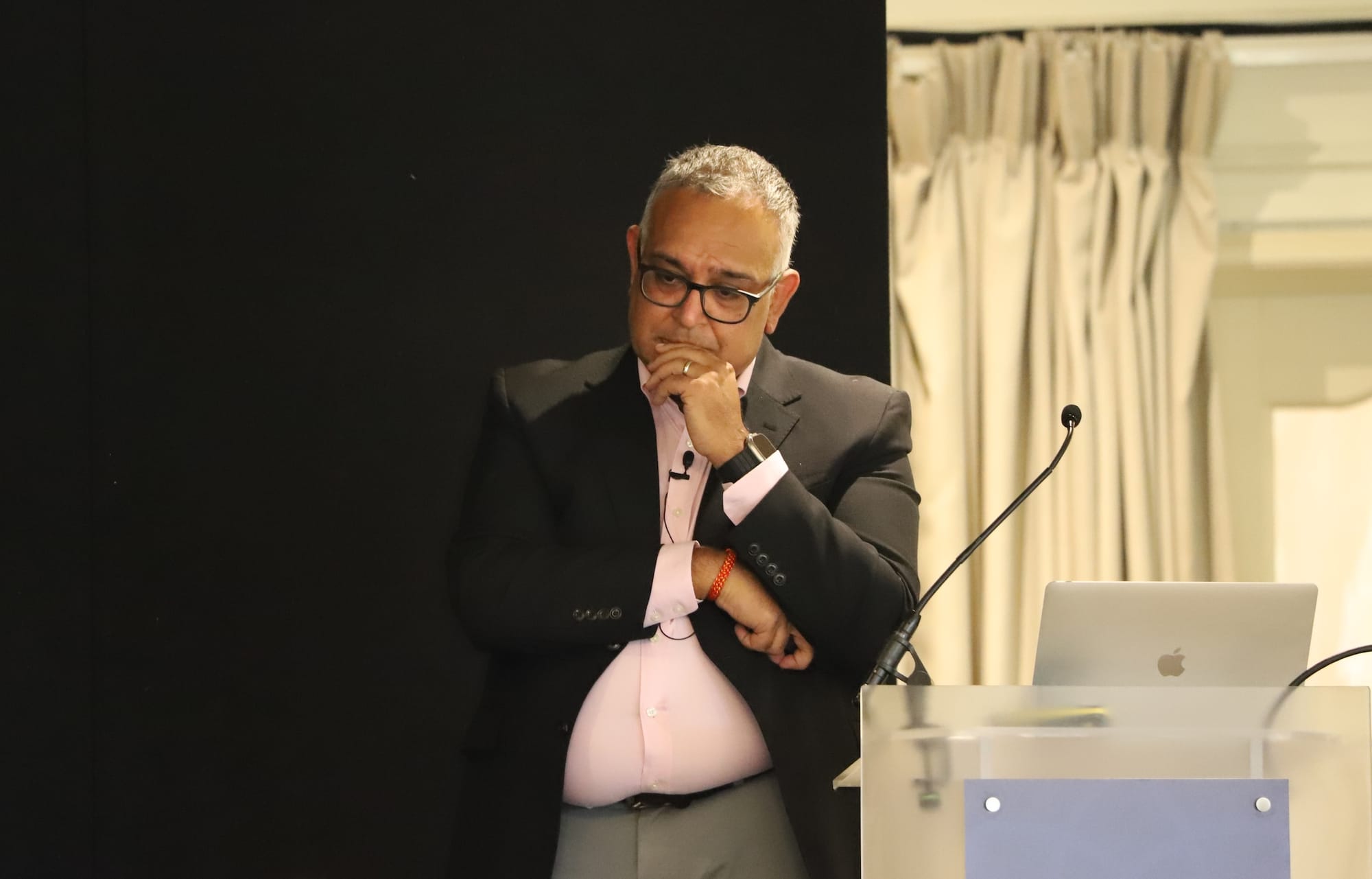
“Those physical and social risks are not a great environment for business to thrive in. If we want businesses to thrive, they need a stable biosphere. They need a stable society.
“Therefore, for business success, we need to make sure that we're arresting climate change, that we're in fact reversing emissions, bringing them as close to zero as possible, as quickly as possible, and ideally going into negative emissions, so that we stop not just warming our planet, but we start cooling it down.”
How different generations will experience a warming climate
A four year old is expected to experience 40 extreme heat waves in their lifetime.
An 80-year-old that is alive today only experienced three.
“But the truth is, both the 80-year-old and the four-year-old experience heat waves. The 80-year-old is definitely biologically more susceptible to heat waves and those being sadly ultimately fatal. So to say that climate change or sustainability is something about future generations is actually factually incorrect. It's about every living generation today.”
The planet provided sufficient resources, he said, but we needed to use them in a more responsible way.
That’s not just about manufacturing and how goods are sold, but also about how consumers use them.
“Both sides need to happen at the same time. There’s a moral and social opportunity, and environmental and social opportunity.
“There's also an economic opportunity for businesses who can thrive within the biosphere, within a social construct, they can be successful. And that value is in trillions of dollars worth of value.
“And the good news for us all is that some businesses, not nearly as many as should, but some businesses are already starting to practice that and seeing real success, success in terms of what I call playing defense, which is mitigating their risks from extreme weather, from resource scarcity, but also playing offense by entering into new markets, growing markets like net zero technologies or circular fashion, and those businesses are doing really well. They're outperforming their peers.”
As one example, the prediction this year is that energy systems will attract $3.3 trillion worth of investment, two-thirds of that will be in renewables.
Map & data © Global Energy Monitor, licensed under CC BY 4.0. Source: Global Solar Power Tracker.
A map of solar power shows how it is being deployed globally.
“China has a very powerful supply chain, and this is now providing affordable solar in many parts of the world.
"There's a real take up in the last six months in Africa in particular, really powerful.
"Abu Dhabi relies for 60% of its revenues from oil. It's the richest of the Emirates, and yet it's the location where the government is building the world's largest solar energy plant, a combination of battery storage and PV enough to power 750,000 homes, three times the number of homes currently in the Emirates as a whole. That's phenomenal forward thinking.”
In the UK, Octopus has adopted an all encompassing approach, connecting renewable energy, tariffs, battery storage, heat pumps and the like in a way that saves customers money.
But it is not a panacea.
There are graveyards of EVs and wind turbines, showing it is not just about shifting resource consumption.
The answer, Datta said, was to adopt a circular approach, not the linear one we currently see where we essentially consume something then throw it away which leads to massive value loss.
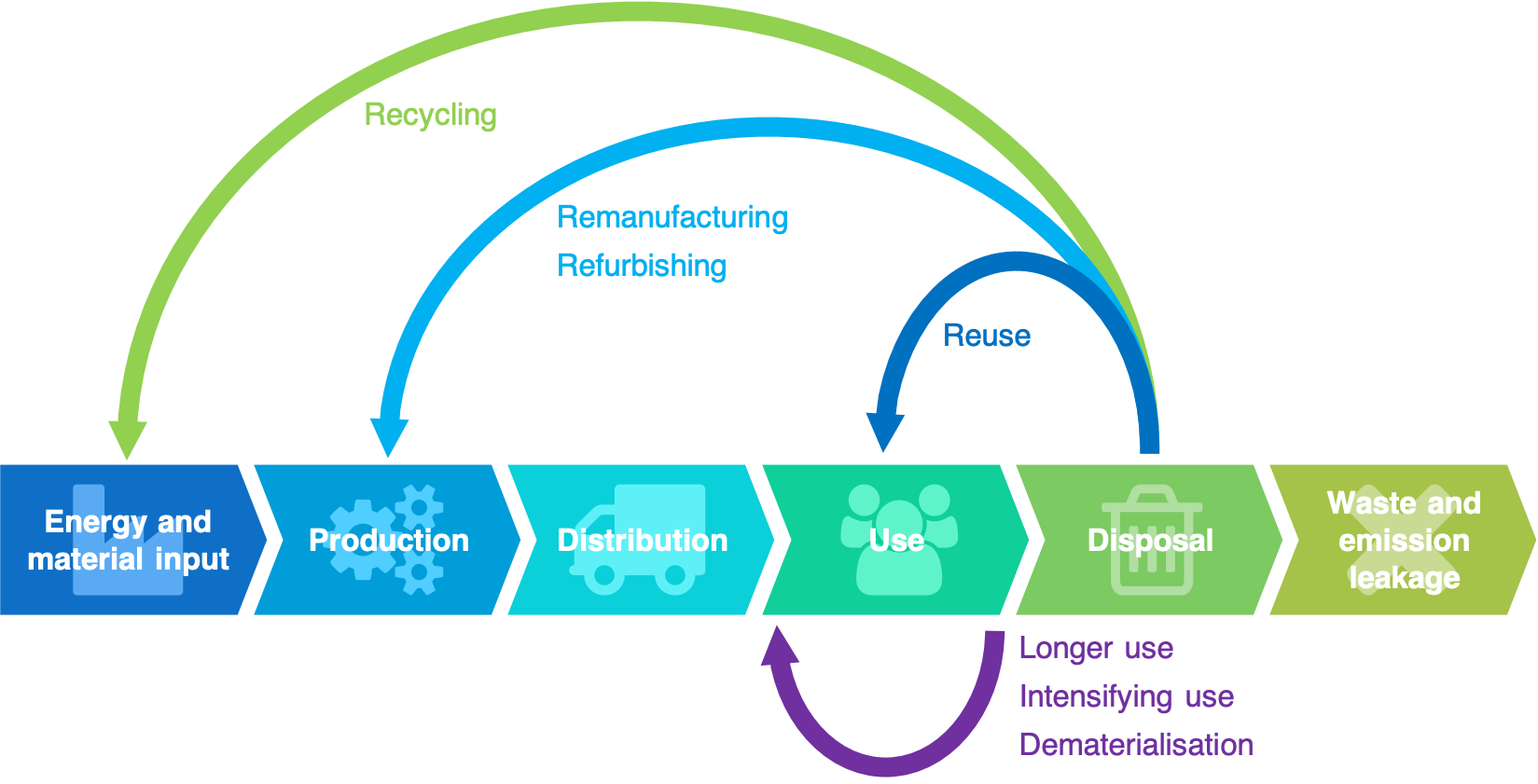
Examples of what companies are doing
Apple is now offering an official repair service where you can buy replacement parts to upgrade or mend your phone. They also offer good deals to buy back old phones.
“That's got great environmental benefits, but it's also a very cute resource security strategy by Apple.”
Decathlon’s buy back program is worth nearly EURO 0.5bn a year.
“You can take anything back to Decathlon. They give you an incentive, a voucher, which drives further loyalty towards them.”
Under its Replay programme, Lego has collected 400 million bricks in the UK and Europe.
Selfridges have committed that by 2030 they want half of all their transactions to be circular, through repair, reuse and recycling. They are partnering with start-ups to do that.
IKEA is another company with circulatory at the heart of their strategy, both in store and online where people can trade peer to peer.
Online marketplace for selling second-hand items Vinted has 100 million users and are making £800m a year in profit. It is only 11 years old.
No resources - no business
While the Western media has portrayed a pushback against sustainability, not least through a focus on the policies coming out of President Donald Trump’s leadership in the US, Datta believed that focus was misplaced.
“For most of the world, this is no longer just a morality case.
“This is a materiality case. If you don't have resources to run your business at an affordable price, you can’t run your business.
“So if you want to protect those resources, you need to adopt regenerative ways of doing business, circular ways of doing business, and you need to protect your assets and your supply chains against what I call locked in climate change. You can't, as someone much more famous than I said, do business on a dead planet.”
International non-profit CDP has pioneered environmental data disclosure for companies, and now processes data from 25,000 business that are worth two-thirds of global market capitalisation,
Its 2025 Disclosure Dividend, argued that every $1 spent on addressing physical climate risks could deliver a return of up to $21 for some firms, with an average return of up to $8.
Disclosure, CDP said, remains a critical enabler helping businesses identify material risks and chart credible action.
Almost two-thirds of companies (64%) identified environmental opportunities – and of those, 12% unlocked a staggering $4.4 trillion in opportunity value in 2024 alone. The quantified opportunities yet to be realised represent another $13.2 trillion in potential upside.
Sustainability was moving from being a bolt on to part of the balance sheet, Datta said.
Consumers remain committed to wanting sustainable outcomes and were willing to invest where it is practical, affordable and easy to understand.
Companies that harness that sentiment are the ones growing.
More from the CI Sustainable Business Conference coming soon…
Tues 22 Oct: This story was updated to refer to the Channel Islands Sustainable Business Conference after incorrectly referring to Sustainability in the headline. As part of our commitment to trusted news we aim to be clear when making any corrections.

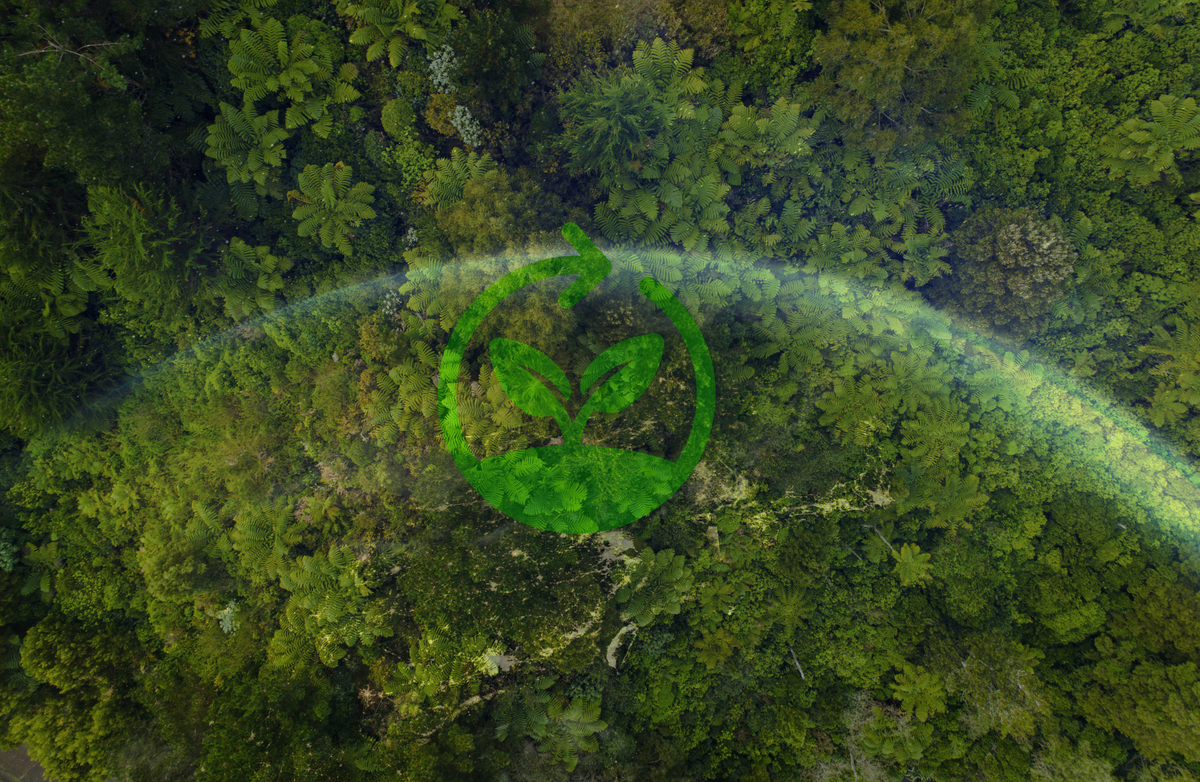

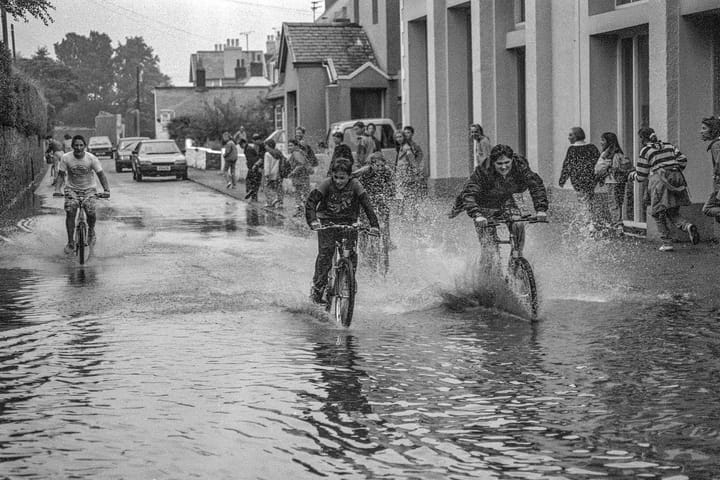

Comments ()